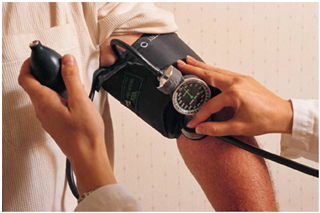Quality Living Styles
Hints and Tips of the Month
Understanding High Blood Pressure Numbers

When I receive results from blood pressure readings, cholesterol tests and even just BMI, Body Mass Index, information, I have difficulty understanding what they really mean. I have been told the numbers are good or you should not be at this reading, you should be at----and I am lost. Not appreciating the meaning of the numbers makes a huge difference to your health.
I set out to write hints and tips on the subject of numbers for all 3 conditions, but gathered so much of useful information on high blood pressure, that I have decided to concentrate just on the high blood pressure numbers in this segment and related relevant information. The numbers for Choleseterol and BMI will follow in other segments. This information comes from Dr. Oz.
![]()
The Silent Killer
High blood pressure, also known as hypertension, is often called the Silent Killer because many people are not aware that their blood pressure is too high. One out of 3 adults in the US suffers from hypertension.
Many people with high blood pressure may not feel any symptoms and therefore not have their hypertension diagnosed and treated for many years. Hypertension is the leading cause of stroke and can cause severe damage to other organs-eyes, kidneys and the arteries that bring blood to the heart muscle (coronary arteries). That's why your blood pressure number is just one of the lifesaving numbers you need to know.
![]()
What Is a Normal Blood Pressure?
Normal, or ideal, blood pressure is less than 120/80 mm Hg.
Blood pressures of 120/80 - 140/90 are considered "prehypertension." Blood pressures in this range do not necessarily require medication and many people in this category can bring their blood pressure down with lifestyle modification, such as losing weight and reducing salt intake. People with cardiovascular risk factors, diabetes or kidney disease with blood pressure in this range often receive medications.
If a person's blood pressure is over 140/90 they are considered to have hypertension. A trial of lifestyle modifications can be considered although many patients will require medication along with lifestyle modification.
![]()
What Do the Numbers Mean?
There are two numbers in the blood pressure measurement. The first, or top number, is called the systolic blood pressure and represents the pressure in your arteries (the blood vessels that carry blood with oxygen from the heart to all parts of the body) when the heart contracts (beats) and pumps blood out of the heart and into the arteries.
The second, or bottom, number is called the diastolic blood pressure and represents the pressure in your arteries while your heart relaxes between beats. Both numbers are important and elevation in one, or both, are considered when making the diagnosis of hypertension.
![]()
How Is Blood Pressure Measured?
Blood pressure is measured with a sphygmomanometer, more commonly called a blood pressure cuff. The cuff is placed around the upper arm just above the elbow and inflated, then deflated while listening with a stethoscope over the artery in the arm. Home blood pressure machines may use a cuff attached to a machine but without the need of a stethoscope.
Blood pressure should be measured after a person has sat quietly for at least 5 minutes and not had caffeine, tobacco or exercised for at least 30 minutes. A proper size cuff should be used. Blood pressure can be taken on either arm and is often taken on both arms for comparison. The pressure in the dominant arm may be slightly higher. The difference between the two arms is generally 10 mm Hg or less.
The diagnosis of hypertension should be confirmed with measurements made on several days, although if severely elevated, treatment may be initiated after one reading. It is often helpful to have a special monitor that a person takes home and records blood pressure for 24 hours.
![]()
A video From Dr. Oz, explaining the numbers
Click on the link to watch this infomative video on
Preventing High Blood Pressure
I hope this video makes an impression on you and that you take steps to prevent high blood pressure. If you would like more information on preventive steps do let me know via, The Contact Link
![]()
If you have any interesting tips to share please email them to 
You may also reach me via my
contact information at
Contact
Thanks to Microsoft Clipart for the images of the stethoscope and blood pressure cuff being used.
Now quickly and easily navigate to your next destination.